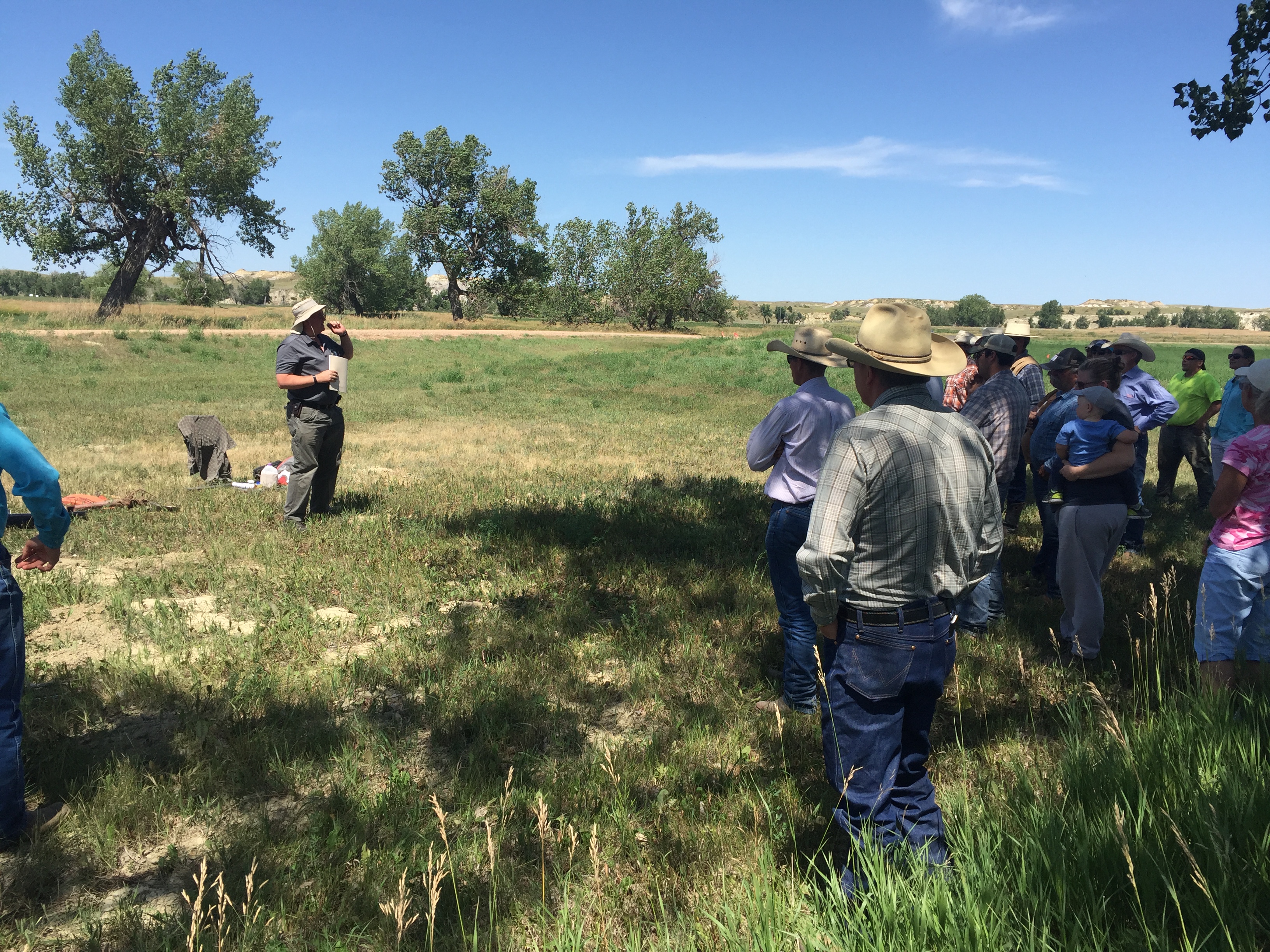
Prairie County
MSU Extension helps landowners with invasive pest management
Published: 2019By Sharla Sackman
The Tri-County area of Prairie, Fallon and Wibaux counties is a location where leafy spurge is a permanent problem. More than 25 years of MSU Extension educational programs and sustained integrated weed management efforts have helped contain the leafy spurge infestation to the same area and slowed the spread to outlying areas. The project began as a cooperative NWTF grant project and even after the grant concluded, an annual tour still takes place to educate and engage producers in noxious weed management. 2019 tour topics were pocket gopher and prairie dog control, herbicides for control of rangeland weeds, and new regional leafy spurge flea beetle research. One producer reported utilizing recommended control methods learned at the tour for pocket gophers.
The noxious weed houndstongue has become an increasing problem in Prairie County due to the easy nature of seed spread via wildlife and livestock. MSU Extension wrote a Montana Noxious Weed Trust Fund (NWTF) Grant to aid private landowners, public land agencies, and the Prairie County Weed District in coming together to educate producers about houndstongue management as well as implement a concerted effort to reduce spread of the weed. MSU Extension and the Prairie County Weed District teamed together to host a Fall Weed Tour where the main focus was on controlling the noxious weeds such as houndstongue, Canada thistle, knapweeds, and leafy spurge in the fall. Topics covered included the do's and don'ts of fall herbicide applications, herbicide control options for annual invasive grasses, and ATV and herbicide handling safety. Tour participants reported learning new herbicide control strategies and a better understanding of the timing of control efforts.



